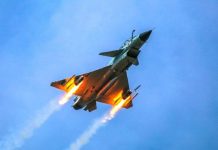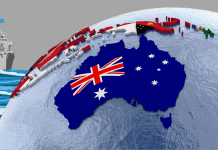Taking a swipe at Beijing’s aggressive posture in the South China Sea, the Indian Army chief General MM Naravane has said that China militarized some of the islands, but this strategy will not work with India.
US Develops A New Hi-Tech Weapon To ‘SHiELD’ Herself From Russian S-400 Missiles
“I think more than anything else, what we have achieved is that this strategy will not work with us and every move will be met resolutely,” he said addressing a webinar organized by Vivekananda International Foundation in New Delhi.
The Chief of Army Staff, also hailed the consensus reached over the disengagement process in eastern Ladakh’s Pangong Tso, calling it a ‘win-win’ situation for both sides. He mentioned that while the threat was real, there were no signs of any “overt collusion” between China and Pakistan during the standoff.
‘Two-And-A-Half Front War’
Ruling out any collusive threat from the two hostile neighbors (China and Pakistan), General Naravane said India is prepared for a long-term policy to address not just a two-front war, but a “two-and-a-half-front war” where the half front refers to India’s internal security issues.
He also mentioned that India and China are engaged in bilateral talks to further ease the tensions from other areas of eastern Ladakh, buoyed by the success in the Pangong Tso.
“We still have a long way to go. We have to move on to the stage of de-escalation. And of course, after that moving back of the troops, the de-induction of the troops which went to the higher reaches,” he said.
“In doing whatever we are doing, we are keeping in mind that we have to be wary. We will be very cautious. There is a trust deficit. Unless that trust deficit is removed, we will, of course, continue to be very wary and watching every movement that happens on either side of the LAC,” he added.

China’s ‘Salami-Slicing’ Strategy
Talking about China’s ‘salami-slicing’ strategy, nibbling off chunks of territory slowly and steadily over the years, the Army chief said Beijing has the “habit of creeping forward”. Such negligible changes at the borders are generally not big enough to be worthy of a strong reaction. This has aided in Beijing’s ambitions to turn even the earlier non-contested areas into disputed ones, laying claims to the land and achieving it without firing even a single shot.
He also cited the example of the South China Sea where the PLA Navy has militarized artificial islands. The General said that such moves cannot deter India and that each of its move would be countered by the Indian Armed Forces. He also complimented the External Affairs Ministry, the National Security Advisor, and the Defense Ministry, which acted in synergy to put diplomatic pressures on Beijing.
“We were all in it together. We had our plan chalked out which we had discussed on what should be the way forward. Whatever has panned out, has happened as a result of that. What we have achieved so far is very good,” General Naravane said.
Meanwhile, contention still remains at Depsang, Hot Springs, Gogra, and other areas along the LAC, which would be negotiated further in the future, he added.
Follow EurAsian Times on Google News




